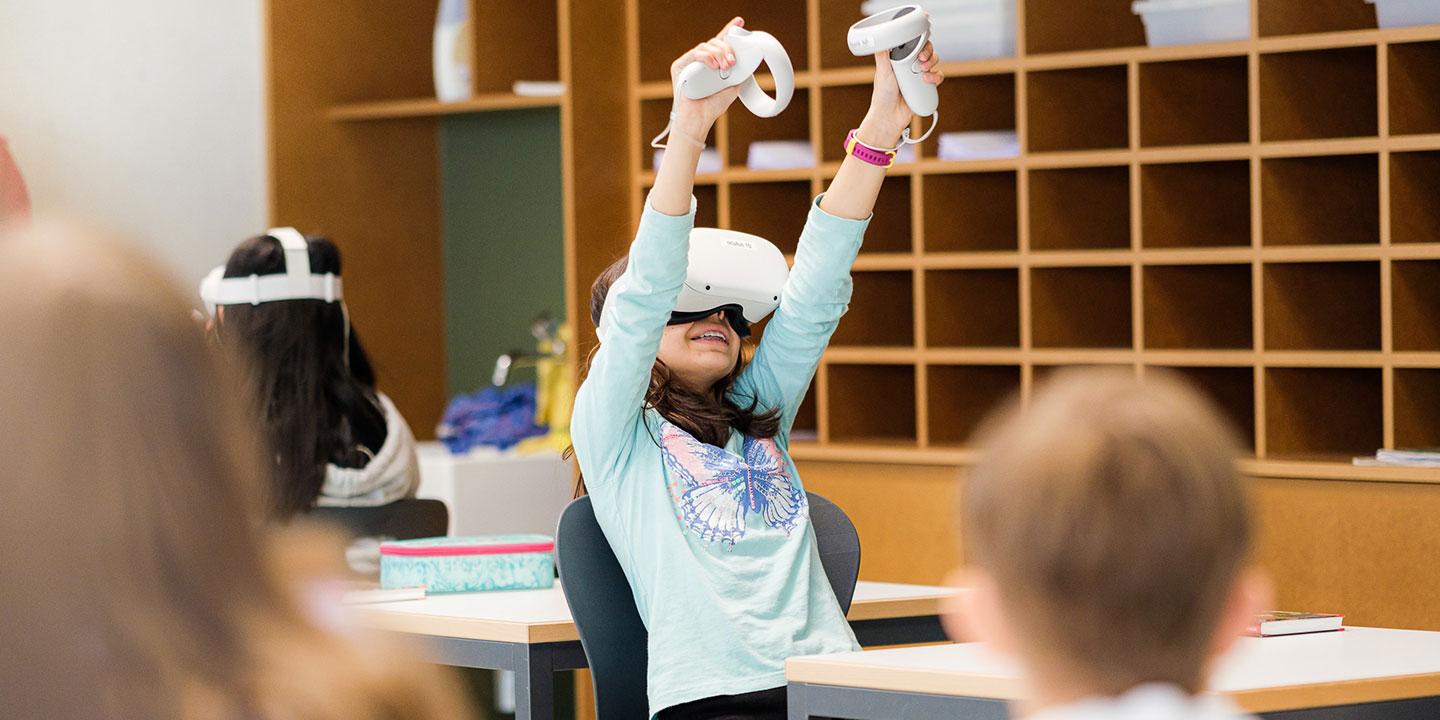Using VR headsets in the classroom

Digital technology offers new ways of transferring knowledge. But in everyday school life, this is not visible. A project explores the possibilities.
Visionaries have for a long time been heralding the technology of the future: VR – virtual reality. According to Facebook founder Mark Zuckerberg, we'll soon be immersing ourselves in virtual worlds using two screens in a headset. Until now, however, VR headsets have merely carved out a niche existence for themselves in the cellars of tech nerds and the minds of corporate bosses.
And yet the technology has moved on considerably: the devices are now compact and affordable enough that, for example, a primary school can buy a classroom’s worth of headsets and supplement lessons with virtual content. This is precisely where the NRP 77 project run by FernUni Schweiz, the University of Applied Sciences and Arts Northwestern Switzerland (FHNW) and the Bern School of Education comes in. The aim of the project is to design a block of VR lessons and test it out in the classroom. To ensure it is suitable for practical implementation, the research group designed a unit of twelve lessons on the subject of the water cycle – something that is already included in the curriculum.
Several primary school classes in Naters, in the canton of Valais, have already completed their first block of lessons in the new VR learning environment. But prior to that, the researchers had to overcome some unexpected hurdles. "Using a single programmer for the technological environment proved to be unrealistic," reports Trix Cacchione, Project Manager and Professor of Developmental Psychology at FHNW. After the project group had expanded the development team to include a game design studio, a hydrologist and a chemistry teacher, amongst others, the virtual unit was finally ready to be tried out in class. Pupils spend around ten minutes per lesson in virtual reality, immersing themselves in the world of water. A water droplet or a molecule becomes an object of study – the children can experiment with the temperature regulator themselves and observe in real time when clouds form or when it starts to rain.

Trix Cacchione is already declaring the practical trial a success, even though the scientific evaluation is not yet complete. "We were amazed at how quickly the children learned to use the VR headset and were able to concentrate on the lesson content." However, one key prerequisite is training teachers so they can successfully deliver lessons using the new technology. And there are not yet enough suitable teaching materials for the virtual environment. Nevertheless, the developmental psychologist believes in the success of the technology. "Its potential has been discussed for a long time. Now we're also slowly improving the technology." Some educational publishing companies have already expressed an interest in the project.
